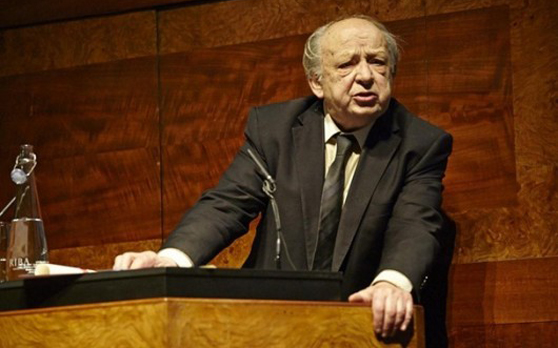Dalibor Veselý, emeritus professor at the University of Cambridge, architect and architectural historian, thinker who managed to connect deep historical knowledge from many fields, philosophical erudition, and engagement with the fundamental architectural problems of the present, passed away in London on March 31. A scholar and a wise man.
 |
| Dalibor Veselý delivering a speech on the occasion of receiving Honorary Membership of RIBA, February 2015 |











